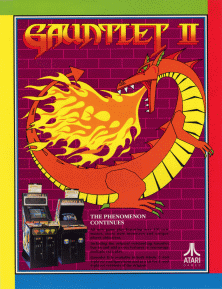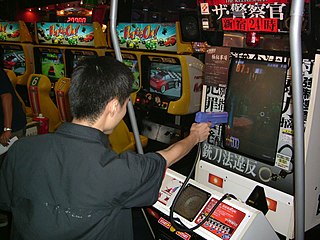Haiku (俳句)listen (help·info) is a very short form of Japanese poetry in three phrases, typically characterized by three qualities:
- The essence of haiku is "cutting" (kiru). This is often represented by the juxtaposition of two images or ideas and a kireji between them, a kind of verbal punctuation mark which signals the moment of separation and colours the manner in which the juxtaposed elements are related.
- Traditional haiku often consist of 17 on, in three phrases of 5, 7, and 5 on, respectively.
- A kigo, usually drawn from a saijiki, an extensive but defined list of such terms.
In poetry, metre (British) or meter is the basic rhythmic structure of a verse or lines in verse. Many traditional verse forms prescribe a specific verse metre, or a certain set of metres alternating in a particular order. The study and the actual use of metres and forms of versification are both known as prosody.
Senryū is a Japanese form of short poetry similar to haiku in construction: three lines with 17 morae. Senryū tend to be about human foibles while haiku tend to be about nature, and senryū are often cynical or darkly humorous while haiku are more serious. Unlike haiku, senryū do not include a kireji, and do not generally include a kigo, or season word.
Constrained writing is a literary technique in which the writer is bound by some condition that forbids certain things or imposes a pattern.

In prosody, alliterative verse is a form of verse that uses alliteration as the principal ornamental device to help indicate the underlying metrical structure, as opposed to other devices such as rhyme. The most commonly studied traditions of alliterative verse are those found in the oldest literature of the Germanic languages, where scholars use the term 'alliterative poetry' rather broadly to indicate a tradition which not only shares alliteration as its primary ornament but also certain metrical characteristics. The Old English epic Beowulf, as well as most other Old English poetry, the Old High German Muspilli, the Old Saxon Heliand, the Old Norse Poetic Edda, and many Middle English poems such as Piers Plowman, Sir Gawain and the Green Knight, and the Alliterative Morte Arthur all use alliterative verse.
"In A Station of the Metro" is an Imagist poem by Ezra Pound published in 1913 in the literary magazine Poetry. In the poem, Pound describes a moment in the underground metro station in Paris in 1912; Pound suggested that the faces of the individuals in the metro were best put into a poem not with a description but with an "equation". Because of the treatment of the subject's appearance by way of the poem's own visuality, it is considered a quintessential Imagist text.
Syllabic verse is a poetic form having a fixed or constrained number of syllables per line, while stress, quantity, or tone play a distinctly secondary role — or no role at all — in the verse structure. It is common in languages that are syllable-timed, such as Japanese or modern French or Finnish — as opposed to stress-timed languages such as English, in which accentual verse and accentual-syllabic verse are more common.
The Tanaga is an indigenous type of Filipino poem, that is used traditionally in the Tagalog language. The modern tanaga is used in a variety of Philippine languages and English due to popularity in the 20th century. Its usage declined in the later half of the 20th century, but was revived through a collectivity of Filipino artists in the 21st century. The poetic art uses four lines, each line having seven syllables only. The art exemplifies teachings, idioms, feelings, and ways of life.
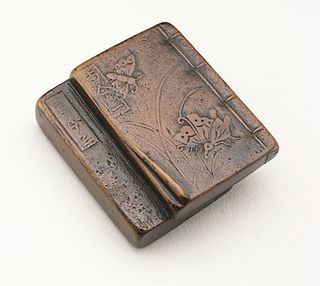
Japanese poetry is poetry of or typical of Japan, or written, spoken, or chanted in the Japanese language, which includes Old Japanese, Early Middle Japanese, Late Middle Japanese, and Modern Japanese, and some poetry in Japan which was written in the Chinese language or ryūka from the Okinawa Islands: it is possible to make a more accurate distinction between Japanese poetry written in Japan or by Japanese people in other languages versus that written in the Japanese language by speaking of Japanese-language poetry. Much of the literary record of Japanese poetry begins when Japanese poets encountered Chinese poetry during the Tang dynasty. Under the influence of the Chinese poets of this era Japanese began to compose poetry in Chinese kanshi); and, as part of this tradition, poetry in Japan tended to be intimately associated with pictorial painting, partly because of the influence of Chinese arts, and the tradition of the use of ink and brush for both writing and drawing. It took several hundred years to digest the foreign impact and make it an integral part of Japanese culture and to merge this kanshi poetry into a Japanese language literary tradition, and then later to develop the diversity of unique poetic forms of native poetry, such as waka, haikai, and other more Japanese poetic specialties. For example, in the Tale of Genji both kanshi and waka are frequently mentioned. The history of Japanese poetry goes from an early semi-historical/mythological phase, through the early Old Japanese literature inclusions, just before the Nara period, the Nara period itself, the Heian period, the Kamakura period, and so on, up through the poetically important Edo period and modern times; however, the history of poetry often is different than socio-political history.
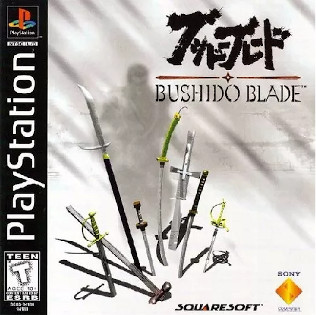
Bushido Blade is a 3D fighting video game developed by Light Weight and published by Square and Sony Computer Entertainment for the PlayStation. The game features one-on-one armed combat. Its name refers to the Japanese warrior code of honor Bushidō.
Hokku is the opening stanza of a Japanese orthodox collaborative linked poem, renga, or of its later derivative, renku. From the time of Matsuo Bashō (1644–1694), the hokku began to appear as an independent poem, and was also incorporated in haibun. In the late 19th century, Masaoka Shiki (1867–1902), renamed the stand-alone hokku to haiku, and the latter term is now generally applied retrospectively to all hokku appearing independently of renku or renga, irrespective of when they were written. The term hokku continues to be used in its original sense, as the opening verse of a linked poem.
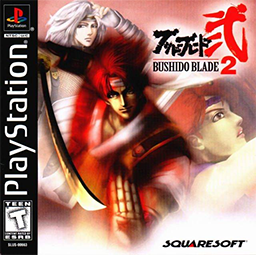
Bushido Blade 2 is a fighting video game published by Square, released in Japan and North America in 1998. It is the sequel to Bushido Blade, which had been released the previous year.
Gabriel Rosenstock is an Irish writer who works chiefly in the Irish language. A member of Aosdána, he is poet, playwright, haikuist, tankaist, essayist, and author/translator of over 180 books, mostly in Irish. Born in Kilfinane, County Limerick, he currently resides in Dublin.
The term On refers to counting phonetic sounds in Japanese poetry. In the Japanese language, the word "on" (音) means "sound". It is used to mean the phonetic units counted in haiku, tanka, and other such poetic forms. Known as "morae" to English-speaking linguists, the modern Japanese term for the linguistic concept is either haku (拍) or mōra (モーラ).
Political verse, also known as decapentasyllabic verse, is a common metric form in Medieval and Modern Greek poetry. It is an iambic verse of fifteen syllables and has been the main meter of traditional popular and folk poetry since the Byzantine period.
Fixed verse forms are a kind of template or formula that poetry can be composed in. The opposite of Fixed verse is Free verse poetry, which by design has little or no pre-established guidelines.
A haiku in English is a very short poem in the English language, following to a greater or lesser extent the form and style of the Japanese haiku. A typical haiku is a three-line observation about a fleeting moment involving nature.
Micropoetry is a genre of poetic verse including tweetku and captcha poetry, which is characterized by text generated through CAPTCHA anti-spamming software. The novelist W. G. Sebald may have been the first to use the term "micropoem", in reference to the poems of about 20 words in length that made up his 2004 work, Unrecounted. The more recent popularity of "micropoetry" to describe poems of 140 characters in length or shorter appears to stem from a separate coinage, as a portmanteau of "microblogging" and "poetry" in a notice on Identica on January 23, 2009, announcing the formation of a group for fans of poetry on that microblogging service. A subsequent notice linked to an example of micropoetry by another user, which was clearly lyrical but didn't appear to fit any preexistent form such as haiku or tanka.

Dark Seal (ダークシール) and Dark Seal II are isometric role-playing beat-'em-up video games released for arcade by Data East in 1990 and 1992 respectively. The first game was localized in English under the title Gate of Doom and the second one as Wizard Fire.

